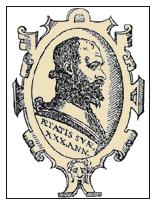Spanish school of fencing

portrait of Carranza, from the frontispiece of De la Filosofía de las Armas y de su Destreza (1582)
|
|
| Focus | rapier; early modern bladed weaponry |
|---|---|
| Country of origin |
|
| Famous practitioners | Jerónimo Sánchez de Carranza, Luis Pacheco de Narváez, Girard Thibault, Anthony De Longis, Ramon Martinez |
| Parenthood | derived from or influenced by Italian tradition (Camillo Agrippa) |
La Verdadera Destreza the conventional term for the Iberian tradition of fencing of the early modern period. The word destreza literally translates to "" or "skill, ability", and thus la verdadera destreza to "the true skill" or "the true art".
While Destreza is primarily a system of swordsmanship, it is intended to be a universal method of fighting, applicable to all weapons in principle, but in practice dedicated to the rapier specifically, or the rapier combined with a defensive weapon such as a cloak, a buckler or a parrying dagger, besides other weapons such as the late-renaissance two-handed montante; the flail; and polearms such as the pike and halberd.
Its precepts are based on reason, geometry, and tied to an intellectual, philosophical, and moral ideals, incorporating various aspects of a well-rounded Renaissance humanist education, with a special focus on the writings of classical authors such as Aristotle, Euclid, and Plato.
The tradition is documented in scores of fencing manuals, but centers on the works of two primary authors, Jerónimo Sánchez de Carranza (Hieronimo de Carança, d. c. 1608) and his student Luis Pacheco de Narváez (1570–1640).
Jerónimo Carranza's seminal treatise De la Filosofía de las Armas y de su Destreza y la Aggression y Defensa Cristiana was published in 1582 under the sponsorship of Don Alonso de Guzmán El Bueno, 7th Duke of Medina Sidonia , but according to its colophon was compiled as early as 1569. Pacheco in a letter to the Duke of Cea in Madrid on 4 May 1618 stated that Carranza's system was based on the work of Italian fencing theorist Camillo Agrippa.
...
Wikipedia
